The result of three years of traveling to such far-flung places as Mozambique, Nepal and Central America, the songs on 1989’s Big Circumstance reflect Bruce Cockburn’s heartfelt reactions to war, repression and environmental abuse. The celebrated Canadian singer-songwriter was already well known for such forthright songs of the 1980s as “If I Had a Rocket Launcher” and “Call it Democracy.” With Big Circumstance, Cockburn ended the decade with some of the most politically potent material of his career, including “If a Tree Falls,” which tackled the issue of rain forest destruction. “From Sarawak to Amazonas, Costa Rica to mangy B.C. hills,” he sang angrily, “ancient cord of coexistence hacked...
Music journalism, books and more
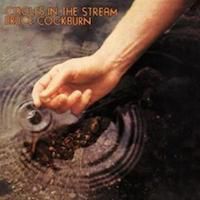 One of the marks of a great live album is the ability of the artist to inject his material with new vitality, to the point where even well-known songs take on fresh meaning. Bruce Cockburn did exactly that with Circles in the Stream, which caught the Canadian folksinger at the culmination of his first tour with a full band. That group provided the kind of intelligent and intuitive accompaniment that creates an inspired—and inspiring—concert experience. “It’s amazing to hear how tight we are together,” percussionist Bill Usher once recalled, on hearing the recording. “We’re all hitting the same accents at the same time and in harness with each other.”
One of the marks of a great live album is the ability of the artist to inject his material with new vitality, to the point where even well-known songs take on fresh meaning. Bruce Cockburn did exactly that with Circles in the Stream, which caught the Canadian folksinger at the culmination of his first tour with a full band. That group provided the kind of intelligent and intuitive accompaniment that creates an inspired—and inspiring—concert experience. “It’s amazing to hear how tight we are together,” percussionist Bill Usher once recalled, on hearing the recording. “We’re all hitting the same accents at the same time and in harness with each other.”
Recorded in the spring of 1977 at Toronto’s venerable Massey Hall, Circles in the Stream captures Cockburn at the peak of his creative powers. Originally released shortly after Cockburn’s fine transitional album In the Falling Dark, the live recording blends adventurous jazz textures with his more familiar folk influences. The album opens with the stirring sound of a traditional Scottish tune on bagpipes, before Cockburn and his sidemen—Usher, bassist Robert Boucher and electric pianist and marimba player Pat Godfrey—segue into a shimmering rendition of “Starwheel.” Following a marimba-laced version of the stark “Never So Free,” Cockburn launches into three newly written songs: the stunning guitar instrumental “Deer Dancing Round a Broken Mirror,” the dreamy, jazz-tinged French song “Homme Brûlant (Burning Man)” and the rhythmic, politically charged number “Free to Be.”
Two other new songs rank among the album’s highlights. Like “Deer Dancing,” the wondrously intricate instrumental “Cader Idris,” named after a Welsh mountain which means “Chair of Idris,” showcases Cockburn’s superb fingerpicking and fretwork. “Red Brother Red Sister” acknowledges the historic
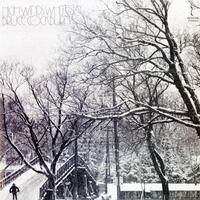 The stark black and white cover photo speaks volumes about Bruce Cockburn in the early 1970s. He stands alone at the foot of a bridge, surrounded by snow-capped trees, looking like what writer Jack Batten then described as a “splendid survivor of Robin Hood’s merry men dressed in leather jerkins and boot-high moccasins.” At the time, the rising singer-songwriter possessed a deep fascination with the wilderness and things medieval—especially Renaissance music. And although already on a quest, Cockburn had not yet embraced his particular brand of Christianity. He was, in his own words, a “spiritual loner who sought truth in nature.”
The stark black and white cover photo speaks volumes about Bruce Cockburn in the early 1970s. He stands alone at the foot of a bridge, surrounded by snow-capped trees, looking like what writer Jack Batten then described as a “splendid survivor of Robin Hood’s merry men dressed in leather jerkins and boot-high moccasins.” At the time, the rising singer-songwriter possessed a deep fascination with the wilderness and things medieval—especially Renaissance music. And although already on a quest, Cockburn had not yet embraced his particular brand of Christianity. He was, in his own words, a “spiritual loner who sought truth in nature.”
Images and references to rivers, birds, mountains and, especially, sunlight abound on 1971’s High Winds White Sky—as they do on Cockburn’s previous self-titled debut album and the subsequent Sunwheel Dance. The three albums formed a powerful acoustic trilogy that established Cockburn as one of Canada’s most important performers of introspective, literate songs. Unfortunately, they also typecast him as a pastoral folkie, an image that Cockburn found ultimately restricting. For one thing, his tastes went well beyond just folk into country blues and global music. And his interests led him to Buddhist teachings, from the Beat writers to the Sutras themselves. Blending all of those elements, High Winds White Sky remains a landmark recording—as fresh and
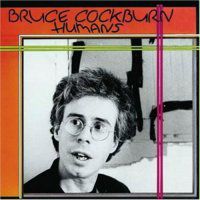 Ranked by many people as Bruce Cockburn’s best album, Humans is a watershed release in the acclaimed Canadian singer-songwriter’s stellar career. It came in the midst of tumultuous change in Cockburn’s life, following the breakup of his 10-year marriage and his move from the country to the city. After a decade of rural existence, living in a camper and then settling in tiny Burritt’s Rapids, south of Ottawa, the longtime loner took up residence in downtown Toronto. It was, he told reporters at the time, a deliberate test of his faith. “I moved with the express purpose of absorbing myself in human society to see what it was,” said Cockburn. “If, as a Christian, I was being asked to love my fellow human beings, I couldn’t love them very well if I didn’t know anything about them.”
Ranked by many people as Bruce Cockburn’s best album, Humans is a watershed release in the acclaimed Canadian singer-songwriter’s stellar career. It came in the midst of tumultuous change in Cockburn’s life, following the breakup of his 10-year marriage and his move from the country to the city. After a decade of rural existence, living in a camper and then settling in tiny Burritt’s Rapids, south of Ottawa, the longtime loner took up residence in downtown Toronto. It was, he told reporters at the time, a deliberate test of his faith. “I moved with the express purpose of absorbing myself in human society to see what it was,” said Cockburn. “If, as a Christian, I was being asked to love my fellow human beings, I couldn’t love them very well if I didn’t know anything about them.”
With 1980’s Humans, Cockburn challenged himself musically as well as spiritually. The album represented the first of his more electric, rock-oriented releases, after the trilogy of acoustic jazz folk recordings that culminated in 1979’s Dancing in the Dragon’s Jaws. The latter produced the reggae-flavored “Wondering Where the Lions Are,” which became a Top 40 hit in both Canada and the United States. Where “Lions” featured the rhythm section of Jamaican star Leroy Sibbles’ group, Humans’ anthemic “Rumours of Glory,” with its bouncy bass, added the reggae legend himself on backup vocals. Cockburn, wielding an electric guitar and backed by such new band members as violinist Hugh Marsh and keyboardist Jon Goldsmith, infused the entire album with a tougher, more uptempo sound. “I really wanted to play reggae music and rock ’n’ roll,” he
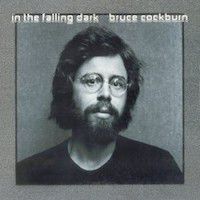 If an artist’s worth can be gauged by the degree to which his artistry evolves, then Bruce Cockburn’s value has grown immeasurably with each passing album. Over the course of 32 years and nearly as many recordings, the legendary Canadian singer-songwriter has always pushed the musical envelope. Never one to rest on his creative laurels, he has constantly tried on new ideas without ever abandoning the fabric of earlier material. The result is a rich body of work—deep, diverse and never disappointing—that stands the test of time and includes some of the most sophisticated and evocative songs in pop music.
If an artist’s worth can be gauged by the degree to which his artistry evolves, then Bruce Cockburn’s value has grown immeasurably with each passing album. Over the course of 32 years and nearly as many recordings, the legendary Canadian singer-songwriter has always pushed the musical envelope. Never one to rest on his creative laurels, he has constantly tried on new ideas without ever abandoning the fabric of earlier material. The result is a rich body of work—deep, diverse and never disappointing—that stands the test of time and includes some of the most sophisticated and evocative songs in pop music.
Originally released in 1976, In the Falling Dark was the first of a trilogy of recordings that bridged Cockburn’s acoustic work of the early ’70s with his electric period a decade later. Stylistically adventurous, it featured more jazz textures than folk influences, reflecting Cockburn’s long-time love of John Coltrane and Wes Montgomery, and showcased the daring, improvisational interplay of flute and horns. In the Falling Dark was also the first collection of songs that fully explored Cockburn’s deepening Christian faith, with numerous songs of praise and worship. But, far from fundamentalist or evangelical in tone, those songs—like all of his spiritual material—could be
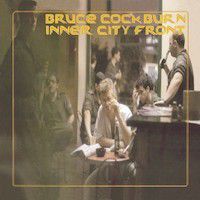 The best artists—not flavour-of-the-week pretenders, but ones who view art as life’s work—know that reinvention is a necessary part of the creative process. Think of the chameleon-like transformations of David Bowie, Bob Dylan or even U2; each has redefined themselves at key points in their careers. Cynics might charge opportunism, but there’s real danger involved with such moves, including risking one’s traditional audience. Truth is, artists need to follow their muse—to say nothing of the need to reflect new circumstances in their lives. All of this brings about changes.
The best artists—not flavour-of-the-week pretenders, but ones who view art as life’s work—know that reinvention is a necessary part of the creative process. Think of the chameleon-like transformations of David Bowie, Bob Dylan or even U2; each has redefined themselves at key points in their careers. Cynics might charge opportunism, but there’s real danger involved with such moves, including risking one’s traditional audience. Truth is, artists need to follow their muse—to say nothing of the need to reflect new circumstances in their lives. All of this brings about changes.
For Canada’s Bruce Cockburn, the months leading up to Inner City Front’s 1981 release had been fraught with change: his marriage of 10 years dissolved, leading him to switch from country to city life. Taking an apartment in downtown Toronto, he assembled a band of crack musicians and adopted a more rugged, urban sound. Gone were most traces of the Gentle Folkie of the late 1960s and even the Mystic Christian of the ’70s. In their place was the New Wave Cockburn of the ’80s, highly politicized and sporting both a leather jacket and an electric guitar. A tour of Italy with bandmates Hugh Marsh, Jon Goldsmith, Kathryn Moses, Dennis Pendrith and Bob DiSalle exposed him to new audiences and provided fresh inspiration. “I’d lost touch with what it felt like to play
The words, “you’ve got to kick at the darkness ’til it bleeds daylight,” from Bruce Cockburn’s “Lovers in a Dangerous Time,” have traveled well. In some places, they’ve even slipped into the vernacular. The phrase “kick at the darkness” became the title of a Cockburn tribute album, featuring a hit version of the song by pop-rockers Barenaked Ladies. And superstar Bono quoted the expression in his own song “God Part II” on U2’s Rattle and Hum album. Meanwhile, the popularity of “Lovers” helped to make Stealing Fire Cockburn’s best-selling album. But, in crafting the lyric, the Canadian singer-songwriter wanted only to issue a challenge to complacency. “What I meant,” he later explained, “was ...
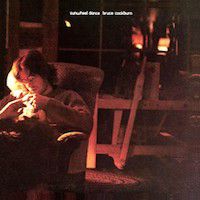 Bruce Cockburn’s third album is an undeniably joyous affair. From the Renaissance-inspired “My Lady and My Lord” to the giddy singalong “For the Birds,” Sunwheel Dance basks in warm, acoustic guitar and bright, hopeful lyrics. Taken together with Cockburn’s previous High Winds White Sky and his self-titled debut, it forms a powerful trilogy that reflects the singer-songwriter’s deep love of nature and his growing spirituality. “It was a period when I was searching but very unaware of my own inner workings,” Cockburn later explained. “There was all this optimism, even though the songs themselves may have been going in different directions. But the imagery of light was there—a lot.”
Bruce Cockburn’s third album is an undeniably joyous affair. From the Renaissance-inspired “My Lady and My Lord” to the giddy singalong “For the Birds,” Sunwheel Dance basks in warm, acoustic guitar and bright, hopeful lyrics. Taken together with Cockburn’s previous High Winds White Sky and his self-titled debut, it forms a powerful trilogy that reflects the singer-songwriter’s deep love of nature and his growing spirituality. “It was a period when I was searching but very unaware of my own inner workings,” Cockburn later explained. “There was all this optimism, even though the songs themselves may have been going in different directions. But the imagery of light was there—a lot.”
Indeed, sunlit images infuse almost every song on the album. On the chorus to the opening “My Lady and My Lord,” Cockburn taunts the wind and rain, knowing that “the sun will shine again.” In the tranquil “Fall,” he sings of walking in a meadow “with sunrise inside,” while the closing “For the Birds” and the hymn-like “He Came from the Mountain” use the sun to describe blue jays and God’s face respectively. Then there is the mandolin-driven “When the Sun Falls” and the album’s breezy title track, the first instrumental to showcase Cockburn’s formidable
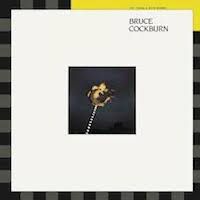 People have made a great deal of fuss about Bruce Cockburn’s activism, usually citing his song “If I Had a Rocket Launcher” as evidence of a sudden shift toward radical politics. He wrote the controversial in 1983 after making his first trip to Central America, where he visited a refugee camp that was attacked by U.S.-backed military helicopters. But, as Cockburn fans know, it wasn’t the first time the respected Canadian singer-songwriter had vented anger at imperialist intervention. He’d tackled the topic as far back as the mid-1970s, with his “Yankee gunboat” song “Burn.” In fact, Cockburn’s political views had evolved steadily, as a direct extension of his spirituality. “Can’t be an innocent bystander,” he declared on his 1981 album, Inner City Front, “in a world of pain and fire and steel.”
People have made a great deal of fuss about Bruce Cockburn’s activism, usually citing his song “If I Had a Rocket Launcher” as evidence of a sudden shift toward radical politics. He wrote the controversial in 1983 after making his first trip to Central America, where he visited a refugee camp that was attacked by U.S.-backed military helicopters. But, as Cockburn fans know, it wasn’t the first time the respected Canadian singer-songwriter had vented anger at imperialist intervention. He’d tackled the topic as far back as the mid-1970s, with his “Yankee gunboat” song “Burn.” In fact, Cockburn’s political views had evolved steadily, as a direct extension of his spirituality. “Can’t be an innocent bystander,” he declared on his 1981 album, Inner City Front, “in a world of pain and fire and steel.”
Completed immediately prior to that fateful Central American trip, The Trouble with Normal bristles with much of the same anger and outrage. Cockburn had been given a book of poetry written by Sandinista priest Ernesto Cardenal and read it while on holiday in the Canary Islands. Those revolutionary poems inspired Cockburn to write
Canadians have a peculiar ability to downplay—or forget altogether—their artists’ achievements. “Cultural amnesia,” Margaret Atwood once called it. Canada’s first lady of letters could well have been referring to how the fabulous Paupers were (until now) relegated to the delete bins of Canadian music history. Atwood was giving her first poetry readings at Toronto’s Bohemian Embassy when The Paupers were establishing themselves as a legendary live act up the street, in Yorkville clubs like the El Patio and Boris’ Red Gas Room. The group went on to score radio hits such as “Simple Deed” and “If I Call You By Some Name.” But most significant—and forgotten—is the fact that in the months leading ...

